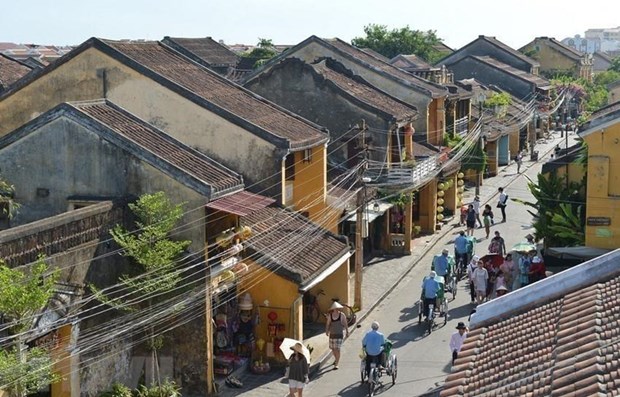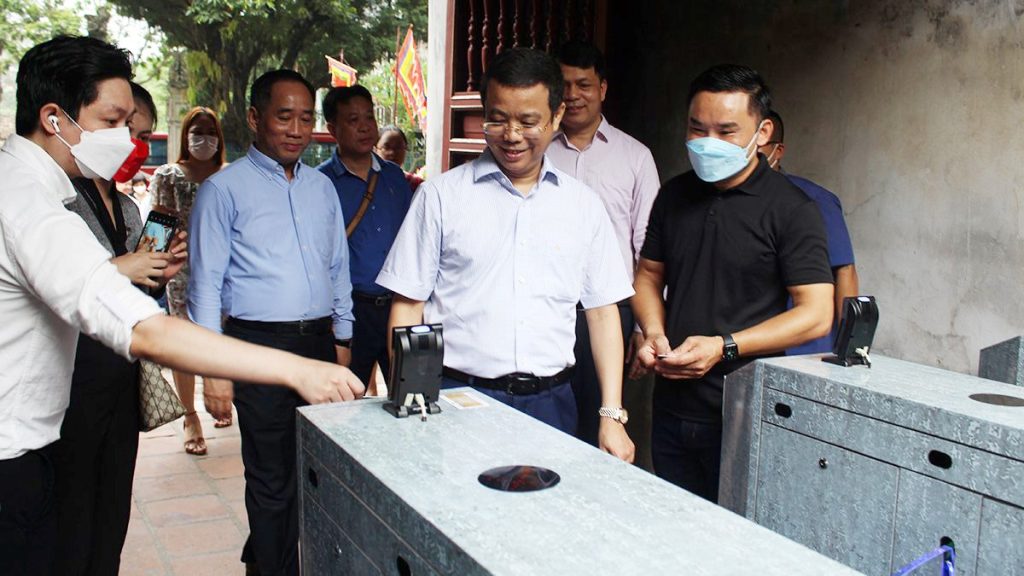The APTS establishes four main criteria that should be satisfied in Public Toilets in order to attain accepted standardised levels for tourism purposes. These criteria are: 1) Design and Environmental Management System; 2) Amenities and Facilities; 3) Cleanliness; 4) Safety.
The Design criteria in Public Toilets refer to various aspects, among which:
Path Finding: Clear signage indicating the presence of a Public Toilet. Toilet facilities must be designated by a legible sign for each sex and for the disabled located near the entrance to each toilet facility and displayed clearly in main passageways. Signage should be commonly recognizable (female/male/disabled signage in dark colour contrasted on light, reflective background). See Annex A, Illustrations 1, 2, 3.
Privacy: referring to the adoption of a single entrance/exit, which is door-less and designed as a maze blocking the immediate view of the interior from the outside. Mirrors, urinals and cubicles should be placed away from the line of sight of the entrance/exit. Modesty boards between urinals should be provided that are of full length but not fixed to the ground (to allow easy cleaning of the area underneath). See Annex A, Illustrations 4, 5, 6.
Pathogens Transmission Path Control: referring to the minimization of direct touch (hand/body) surfaces (i.e. maze shaped door-less entrances/exits – see above –, automatic wash basin taps, flush mechanisms, sanitary bins, toilet/tissue paper dispensers etc.).
Proper ratio of fittings: the ratio of fittings in male and female toilets shall be 5:3, for example 5 WC for female and 3 WC for male toilets.
Proper provision of toilets (and areas): toilet should be provided in “hot spot areas”, such as in parks, immigration checkpoints, shopping centres, main transport stations and airports, tourism locations etc. – where at least minimum toilet provision should be installed – and in town centres. It is recommendable that – same as with existing UK guidelines – a local authority should, at least, provide:
– No less than 1 cubicle per 550 women and female children;
– No less than one cubicle (or one urinal) per 1,100 men;
– No less than and one unisex cubicle for people with disabilities per 10,000 population;
– No less than one unisex baby changing facility per 10,000 people. Where no such separate rooms exist in main Public Toilets, mothers with babies tend to use the disabled toilets – given the lack of space in the regular (abled) toilets. It is therefore recommended to double handicapped facilities to be used for multiple purposes (handicap – baby feeding – baby changing). These special areas and the multiple use of handicapped facilities should be properly signalled both from outside and nearby the toilet. These facilities when independent (not shared with disabled premises) should be equipped with a sink, soap and tissue dispensers, a foldable changing diapers bench and a waste and sanitary bins (hand-free with foot pedal) with liners as minimum accessories. See Annex A, illustrations 7, 8 and 9.
Surrounded landscaping: should be pleasant but not intrusive; provides easy access.
User education: through introduction of visual education material encouraging the users to keep the toilet clean (no smoking, importance of hygiene, cleanliness, tidiness, etc.). To ensure proper behaviour picks up, a medium-long term awareness programme sponsoring a responsible behaviour should be introduced by the local government/
authority/entity.
Accessibility: provisions for the disabled, the elderly and the children. Application of Universal Design in Public Toilet should be provided in accordance with standards, codes or laws adopted by the local government/authority/entity having jurisdiction. When no requirement there exists, we recommend the following general guidelines:
– Accessible route: to be provided which shall be usable by an unassisted wheelchair user. It should extend continuously from the closest street boundary or car parking space to the accessible toilet and be provided with railings. If elevated, it shall have a ramp with railings;
– Accessible entrance: a door should be placed that is minimum 80 cm wide. It shall be opened from the inside out or be a sliding door;
– Accessible cubicles: the cubicle’s minimum size shall be no less than 1.5 m wide and 2.2 m deep for the whole length. Horizontal handrails shall be fixed at the rear, sidewall adjacent to the toilet bowl and at the opposite side of the toilet bowl (drop down moveable handrail) at a height not exceeding 80 cm above the floor;
– Accessible WCs: WCs shall be set between 43 cm and 48 cm above the floor, measured to the top of the seat at the nose of the pan and fitted with a hinged seat no more than 2.54 cm thick unless required otherwise. Suggested side distance of the WC from the wall, not exceeding 50 cm and total distance from the back wall till the nose of the WC 75 cm (Greed, 2007);
– Accessible cubicle toilet paper dispensers: toilet paper dispensers should be located on or in the wall adjacent to the side of the toilet bowl. Dispensers should not stick out more than 10 cm into the minimum cubicle dimensions and shall be located to allow the paper to be dispensed within 30 cm of the nose of the toilet bowl and between 43 cm and 70 cm off the floor. A sensor activated waste bin (hand-free) and sanitary bin with liners should be located at the side of the toilet bowl, within immediate reach;
– Accessible cubicle washbasins: washbasins shall be located as close as possible to the WC to allow handicapped people to reach it easily – thus avoiding contact of dirty hands on various surfaces – at a distance that does not to interfere with a person transferring from the wheel chair to the toilet bowl. Washbasins, therefore, should be set at least 110 cm from the nose of the toilet bowl and shall be mounted at a maximum height of approximately 82 cm off the floor to allow wheelchair users to easily perform washing and grooming activities without being disturbed by any fittings and/or fixtures. Washbasins may be installed in counters or be free standing and attached to walls. All interior water supply and drainage piping should be concealed whenever possible;
– Ambulant toilet cubicles: these cubicles are to cater for ambulant people. Their minimum size shall not be less than 90 cm wide and 1,524 m deep and shall apply to the full height of the cubicle. Handrails shall be fixed to each sidewall adjacent to the toilet bowl at a height not exceeding 80 cm above the floor. A minimum clear door opening width of 70 cm shall be provided along with a toilet paper dispenser. A washbasin may be provided externally to the cubicle. See Annex A, illustrations 10, 11, 12.
– Accessibility for kids: provision of washbasins, WC, urinals hung at child’s height. Toilets seats accommodating for kids are also desirable. See Annex A, Illustrations 13, 14 and 15.
– The colour of the wall tiles for accessible public toilets should adopt strong colour contrast to cater to the needs of the visually impaired.
Flood prone, low-water table, proximity to water bodies: in areas (urban and rural) which are characterized by low water tables, affected by frequent flooding and/or in close proximity to water bodies, the construction and utilisation of elevated dry and compost toilets is recommended, to avoid fresh and marine water contamination.
Heritage and/or nature reserve conservation sites: Public Toilets sited in these areas should possess the basic requirements to pass the audit.
The Environmental Management System criteria in Public Toilets refer generally to the existence of an appropriate waste management and water treatment systems in the Public Toilets audited which are approved and in use by the local government/authority/entity.
In the audit checklist the Environmental Management System criteria refer specifically to the following aspects:
Proper waste management and water treatment systems: the Public Toilet premise should adopt waste management and water treatment systems, which are in accordance with the standards approved by the local government/authority/entity.
Considerations for resource and water use saving: the Public Toilet should consider the adoption of water saving measures, for example: utilization of sensor taps or selfclosing delayed-action mechanical taps and flush; a considerate water flow per time use; provision of auto sensor foam soap dispensers (correct amount to reduce excessive water usage) and sensor automated hand dryers. Annex A, illustrations 16, 17 and 18.
Appropriate protection of potable water supply: the supply lines and fittings for every toilet fixture should be installed so as to prevent backflow.
Appropriate wastewater management: Public Toilets should be connected to a reticulated sewer. In cases where connection to a sewer is not possible, the use of secondary treatment plants should be considered (to allow for waste water treatment to higher standards than a basic septic tank) in accordance with local regulations for discharge and treatment of black and grey waters. Other systems may also be considered like composting or waterless toilets systems; in these cases, however, the type of system and consequent waste management method should be determined / influenced by sitespecific characteristics and regulated in accordance with local existing guidelines for discharge and handling of waste.
Appropriate management of waste in the toilet premise: cleaners should be trained on how to handle safely the waste (potentially hazardous) collected in the toilet to the existing waste collection station.
se of natural light: the public toilet should make use of natural lighting. Environmental friendly-lit Public Toilets in fact, reduce the use of energy.
Correct use and handling of cleaning agents: cleaners should be trained in the correct usage of cleaning agents and of cleaning equipment for the different materials and finishes in the toilet.
Use of environmentally friendly cleaning products: the cleaning service provider should encourage the use of cleaning products, which mitigate the impact on the environment. These shall be used in accordance to manufacturers recommendations on dilution, application and safe handling. Cleaning agents should contain no hazardous and no toxic substances. Ultimately, they should be compliant with the local environmental and safety regulations.
Compliant Cleaning service providers: associations, corporations, businesses, facility management companies etc. should comply with the local environmental protection and safety standards. In time, there should be implemented a government certification scheme by which only accredited cleaning service providers are allowed to perform this
activity.
Tourism Information Technology Center




